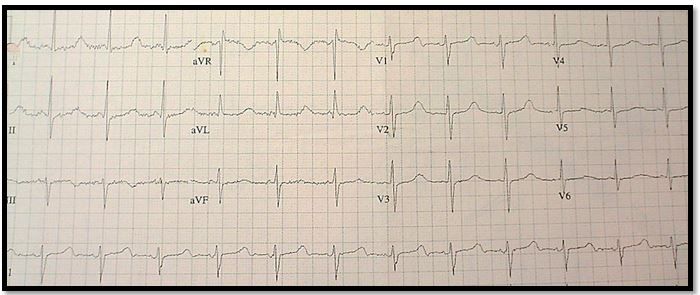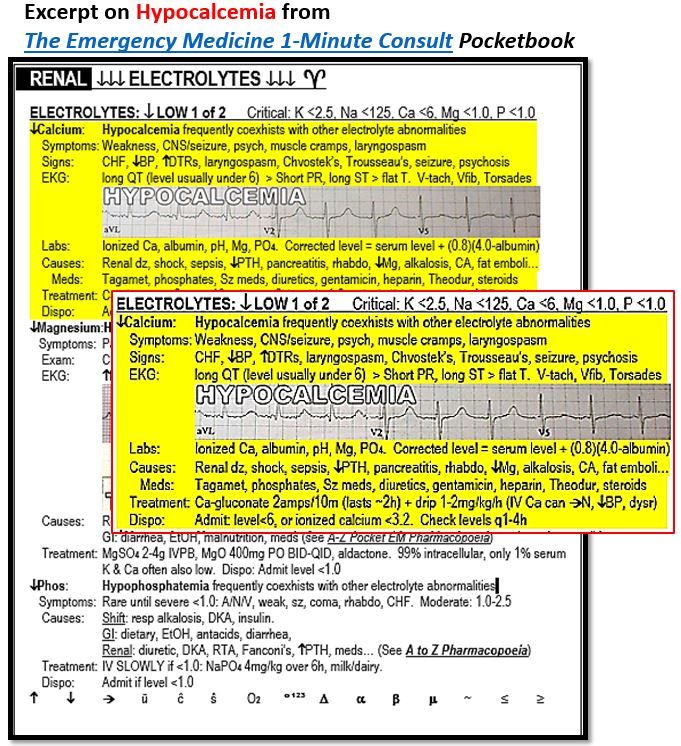- Clinical Technology
- Adult Immunization
- Hepatology
- Pediatric Immunization
- Screening
- Psychiatry
- Allergy
- Women's Health
- Cardiology
- Pediatrics
- Dermatology
- Endocrinology
- Pain Management
- Gastroenterology
- Infectious Disease
- Obesity Medicine
- Rheumatology
- Nephrology
- Neurology
- Pulmonology
ECG Challenge: Palpitations and Syncope in a Young Man
The 32-yr-old claims no medical history other than "thyroid surgery" and takes no medications. What does the ECG suggest?
ECG tracing (please click to enlarge)

Table (please click to enlarge)

Patient history
A 32-year-old man with a history of “thyroid surgery” but no other medical problems and taking no medications presents to the emergency department for palpitations followed by syncope that occurred while he was eating dinner. He denies any chest pain, shortness of breath, fever or other complaints except for more muscle twitching than normal.
Vital signs, physical examination
Vital signs are normal. A basic physical examination including carefully listening for murmurs is normal except for a well-healed scar over the lower neck.
Initial differential diagnosis
- Dysrhythmia
- Dehydration
- Ischemia
- Electrolyte abnormality
Initial diagnostic testing
ECG tracing is shown in Table image at right (please click image to enlarge).
Questions
1. What does the case image show?
2. What should you do next?
Please click here for answers and discussion.
Answers:
1. What does the case image show? It shows a long QT interval and a short PR interval.
2. What should you do next? Check electrolytes including calcium and magnesium.
This patient had a calcium level of 5.8 mg/dL, diagnostic for hypocalcemia.
Discussion
Hypocalcemia is often asymptomatic, but can cause generalized weakness, muscle cramps, twitching or seizures, and, most concerningly, laryngospasm leading to airway compromise or arrhythmias leading to syncope or even death. The physical exam may be normal but there may be evidence of hyperreflexia such as Chvostek’s sign and increased deep tendon reflexes. Hypotension or CHF may rarely occur.
The ECG in hypocalcemia most typically reveals a prolonged QT interval. Less common findings to be attentive for include short PR interval, long ST interval, and flat T-waves. Life-threatening rhythm complications are rare and include ventricular tachycardia or fibrillation. Measured calcium may be falsely low if albumin is low, so albumin should be measured in addition to other electrolytes, including phosphate and magnesium, as they are also often abnormal. The correction formula for the calcium level is shown in the image above as are a variety of potential causes of hypocalcemia.
Treatment
Treatment of hypocalcemia can be with oral calcium in mild cases, but in more severe cases is usually initiated with IV calcium gluconate, 2 amps over 10 minutes followed by a drip. Patients with calcium levels <6 mg/dL should usually be admitted for repletion and monitoring, with the levels repeated every 1 to 4 hours depending on severity. The cause of any electrolyte abnormalities obviously needs to be investigated to further tailor treatment and avoid recurrence.
Conclusion
The ECG normalized after the calcium was repleted. The patient was admitted for observation and maintenance of calcium levels. The cause was determined to be hypoparathyroidism. It was eventually determined that the patient had previously undergone parathyroid, not thyroid, surgery.
For additional information, please see full Excerpt on Hypocalcemia fromThe Emergency Medicine 1-Minute Consult Pocketbook
